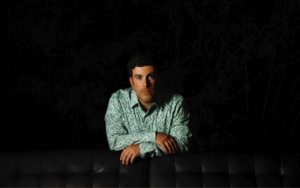Does Creativity Equal Depression?
Health.com recently posted an article about the 10 careers with high rates of depression. Guess what: artist/entertainer is on the list. Our friends at Hypebot.com elaborated on this article on their blog, stating that “most good artists are slightly crazy,” and that “human suffering and tragedy produces the emotional environment necessary for profound music to emerge.”
I disagree. Or rather, I’m wary of any additional myth-making or romanticizing of the notion that you’ve got to be tortured in order to create lasting, important work. I think that we are ALL slightly crazy, and we all have experienced emotional turmoil, regardless of our creative temperament. To be fair to our good friend Kyle at Hypebot, he does say that “you don’t need to suffer from depression to create good music.” I think he is mostly taking an interesting topic and expanding upon the findings of Health.com’s studies. But I believe that being creative does not give license nor enable a greater depth of feeling. Or vice versa.
Life is Suffering
Firstly, we are all alive. And that, according to some Buddhists I know, means we are all constantly suffering. Some relatively stable, content individual who works the daily grind, commuting an hour a day to work, clocking in at 9am, supporting a family, and taking their kids to weekend soccer games has no less valid a source of pain, wisdom, world-weariness, or creative resources to call upon than the strung-out Bohemian going on their 4th heartbreak of the season, pontificating about Rimbaud in the dark recesses of your local hipster dive.
The difference between these two stereotypes, if there is a difference in creative resources, comes merely from practice and devotion to the art. Chances are, the rat-racer has less leisure time to explore creative endeavors and hone their craft. The Bohemian is less tied down, and perhaps has more free time. But they are no more qualified, talented, or focused simply BECAUSE of lifestyle choice. After all, former Poet Laureate Ted Kooser worked his whole life as an executive in the insurance industry. He seems like a jovial, happily-married fella. But his poems sure can cut deep.
You’re Screwed Up Enough Already: Back off!
I believe it was James Joyce that said anyone who has survived childhood has experienced enough living to last a writer a lifetime. If this is true, then it CANNOT be emotional turmoil, torture, pain, or deepness of feeling that makes the true artist. If this were so, we’d all be geniuses. I would argue that, in ways, good art is made from quite the opposite tendency: distancing and detachment.
Because we all FEEL, because we all carry certain hurts and disappointments with us, we are not often moved by the heartfelt outpouring of these sentiments. How impressed would you be by someone simply blurting out in song, “I’m hurting/Life sucks/I feel stuck/This sucks/I’m really torn up/and don’t feel like it’s gonna get better”???
Not very.
This drivel is 100% pure, unfiltered emotion. I don’t want it. I don’t need it. We already feel like this sometimes in life. Yeah yeah. Gimme something else.
But if you hear the same sentiment expressed in a radically new way, it validates our experience and stirs in us that moment of aesthetic bliss that we long for in art. Take the lyrics to the chorus of Elvis Costello’s “This Is Hell” instead:
This is hell, this is hell
I am sorry to tell you
It never gets better or worse
But you get used to it after a spell
For heaven is hell in reverse
Same basic idea as the crappy lyrics,… only better! But why?
Well, he fit the idea of pain into form and rhyme. And those two restrictive forces actually serve to elevate the sentiment. Form and rhyme, by their very nature, serve to distance the creator from the expression. So not only are we delighting in the new ways Costello has painted pain for us, but we’re also pleased by the calculated cleverness of its delivery.
I would argue that great art is not made by the people most willing to suffer, but by those most willing to sympathize (NOT empathize) and then back up from the subject far enough to view it with all its strange associations and permutations. Because we can all easily empathize with the SOURCE of pain, I believe it is through distance, and not pure translation, that artists lead us to that a-ha moment where we feel high, or punched in the gut, or opened up while listening to, looking at, reading, or watching their work.
Art is like Architecture: one poorly placed beam and the whole thing comes crashing down
The other element that is vital to good art, in addition to distance, is good decision-making. Of course, this gets into matters of taste, but I think it is safe to say that we all hope to turn good decision-making into a matter of creative instinct. This can only happen through listening/reading/looking/watching, engaging with the medium, study, practice, and yes, occasionally, mysterious and sudden inspiration. The more you engage with your art, the more intuitive your process will become.
But let us remember that this growing intuition is not occurring because you’re allowing increasing amounts of torture and pain into your fragile psyche. It is happening, as it will with all vocations and skills, because you are PRACTICING! And I don’t mean running scales or doing drum rudiments. I’m talking about practicing an attitude of excitement regarding the creative process. It is not about mastery. It is about discovery, mystery, and tapping into the thrill and awe you felt when you first began.
Here are 12 rules to becoming more creative:
- Practice being sympathetic.
- Practice looking at your art as a series of decisions.
- Practice making better decisions.
- Practice the art of gathering stories, phrases, melodies, ideas.
- Practice turning your assumptions on their head in order to see things in new ways.
- Practice being inspired by others’ works.
- Practice going in new, unfamiliar directions with your art. (Whether internally or externally).
- Practice what you’re good at.
- Practice what you’re bad at.
- Practice listening to the feedback of other people. Practice trusting yourself. Now do both at the same time.
- Practice patience with yourself as you grow, learn, struggle, change, and change again as an artist.
- Practice, practice, practice.
- Bonus rule: Then practice breaking any of these rules that aren’t working for you.
And don’t believe anyone who sells you more of the ridiculous myth that you need to suffer for your art. We ALL have broken hearts. You’re plenty crazy enough. Now accept THAT as your license to start (or continue) making good creative decisions.
-Chris R. at CD Baby

